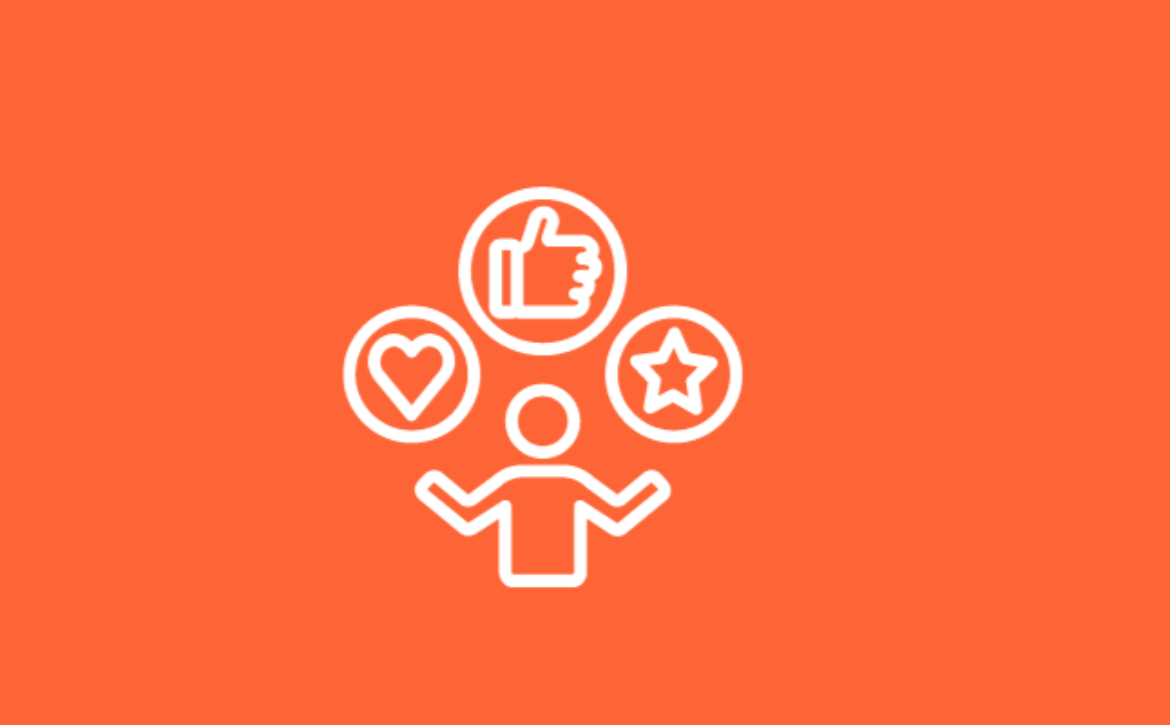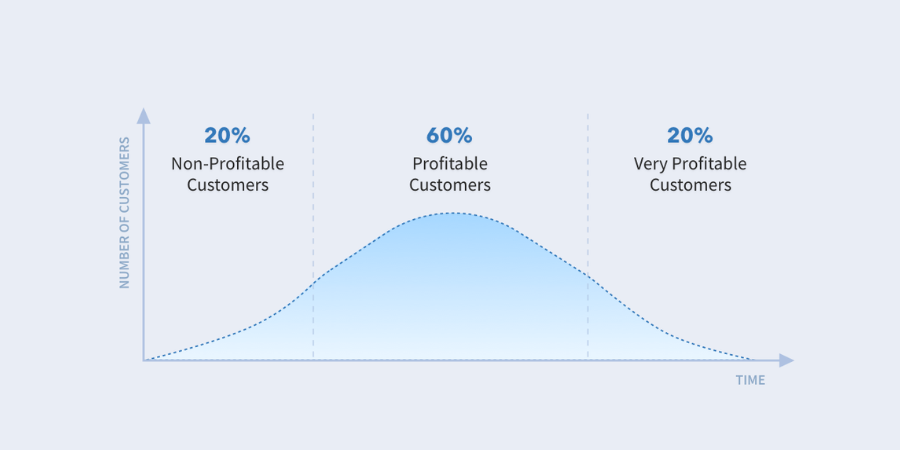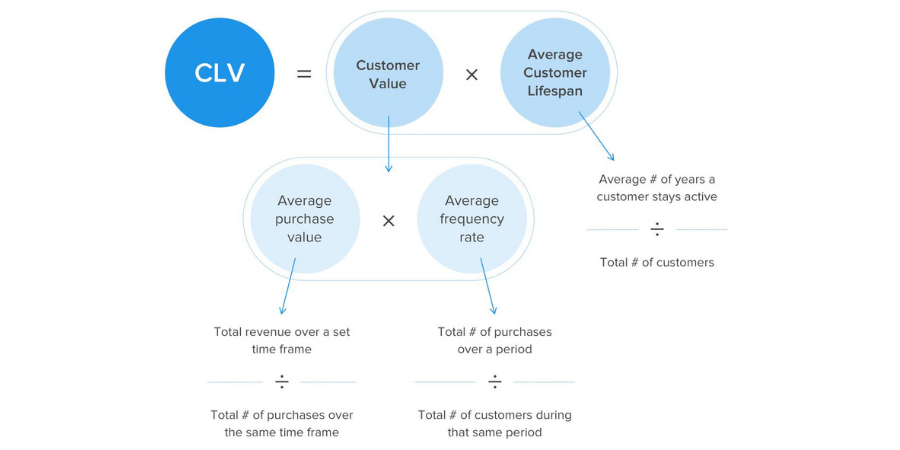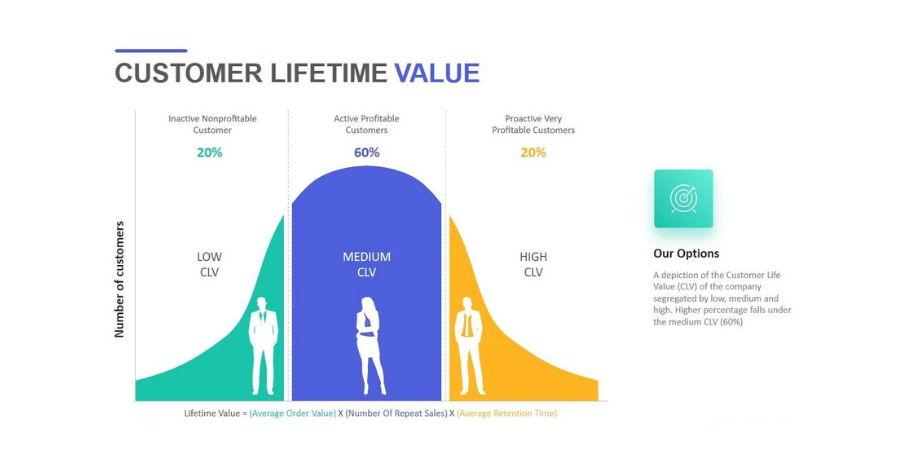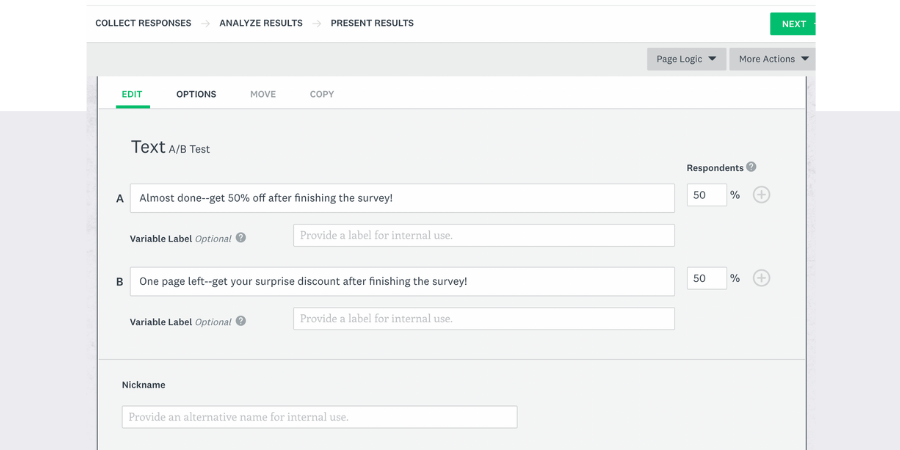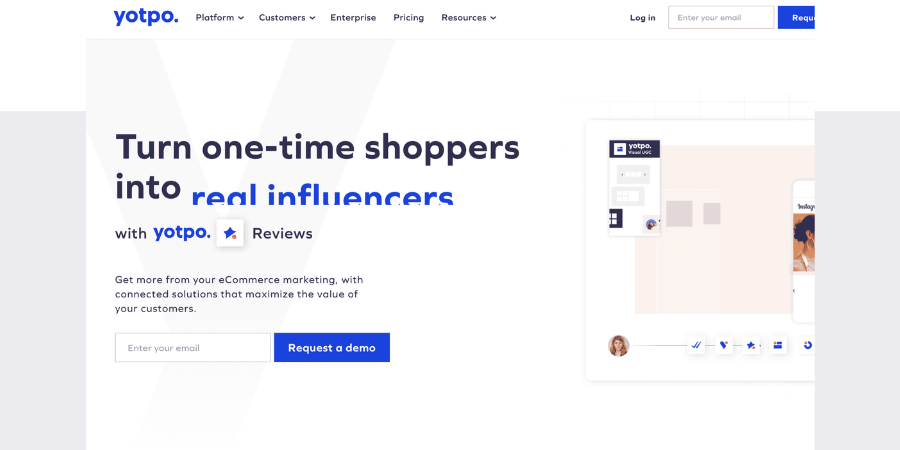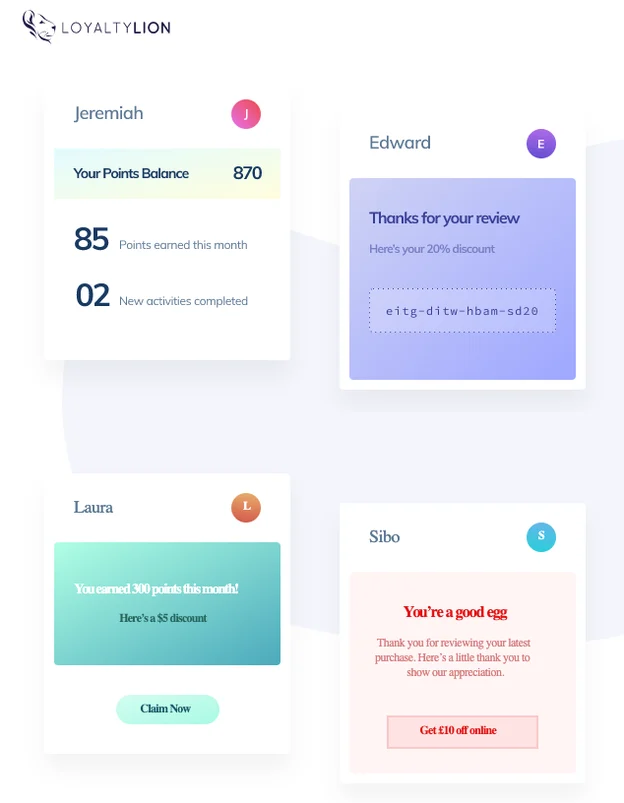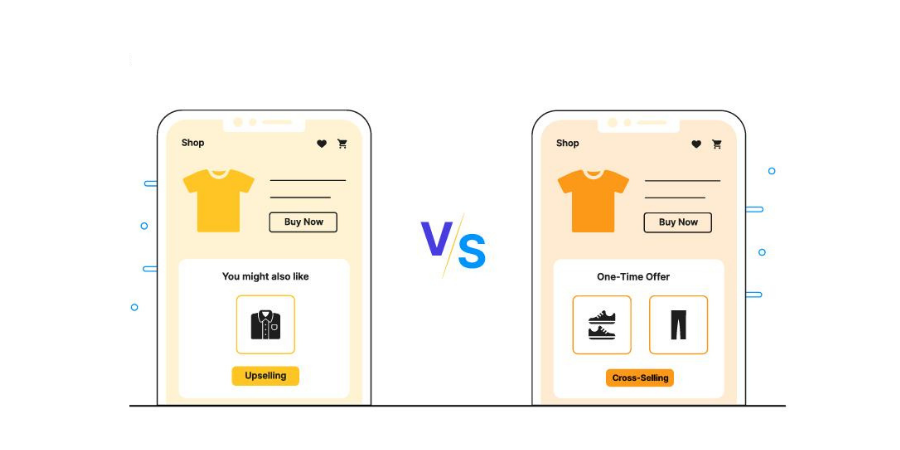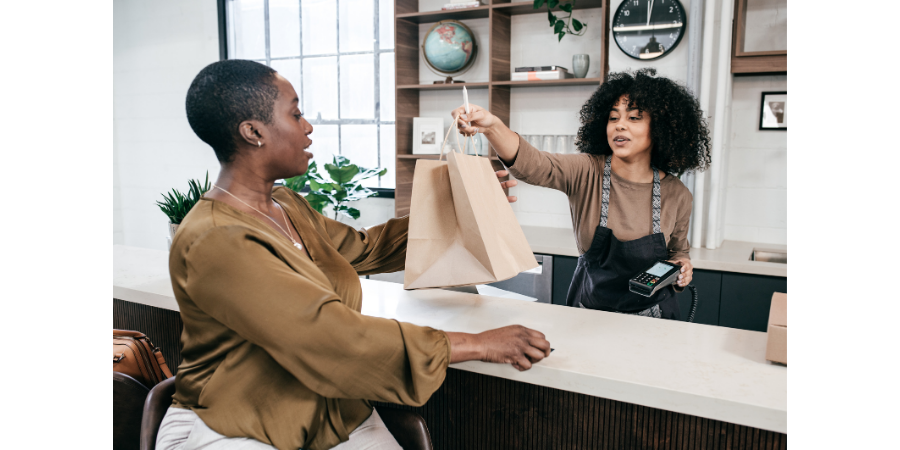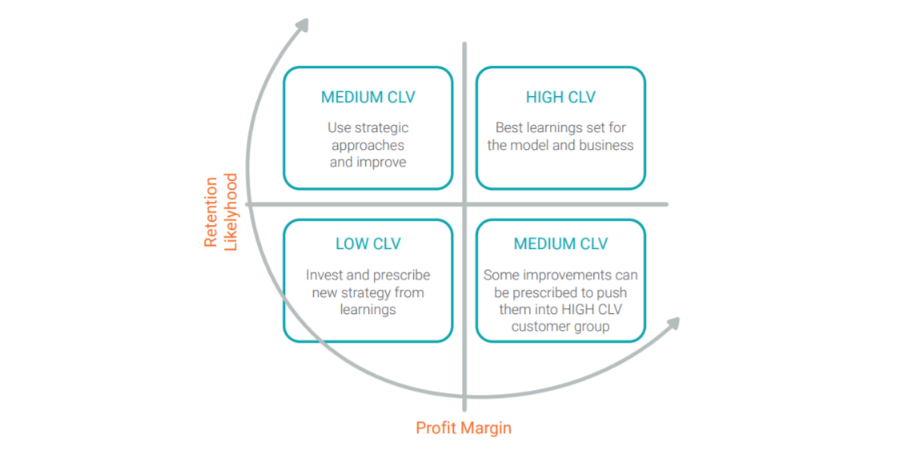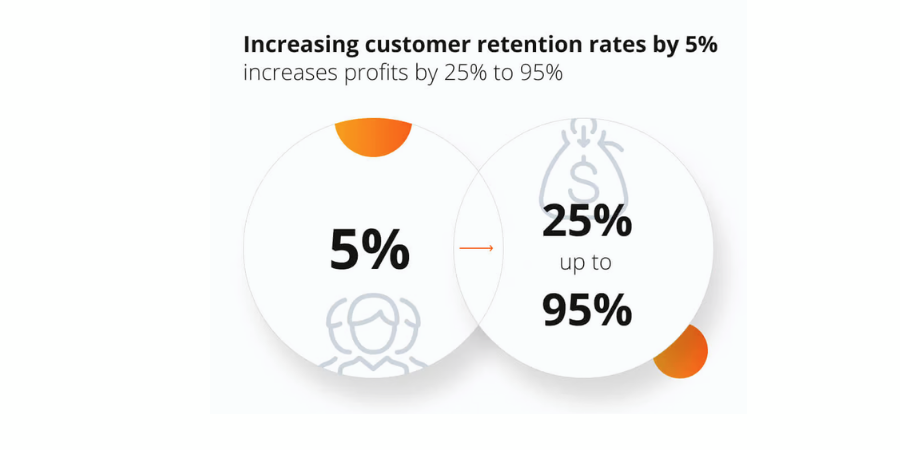The Ultimate Guide to Elevating Your Customer Lifetime Value in 2024!
Table of Contents
- 01. Calculate customer acquisition cost
- 02. Calculate customer lifetime value (CLV)
- 03. Listen to customer feedback
- 04. Provide exceptional customer service and support
- 05. Personalize marketing efforts based on customer data
- 06. Implement loyalty programs to incentivize repeat purchases
- 07. Upsell and cross-sell relevant products or services
- 08. Build strong customer relationships
- 09. Segment your customer lifetime values
- 10. Focus on customer retention and reducing churn
Do you know the best way to increase your customer lifetime value in 2024? According to the research of 2023, There are two ways to grow your business.
The first is customer acquisition which refers to gaining new customers and clients using customer acquisition techniques. The second is customer retention which revolves around growing your business by selling more to your existing customers.
While both these approaches come with their pros and cons, customer retention is a far more effective strategy for businesses that want to create a stream of steady income for themselves.
Also, customer acquisition is expensive. Research suggests that customer acquisition can cost businesses 7-times more than customer retention. If you carefully go through this research, you’ll come to know that despite being expensive, more than 44% of businesses spend their resources on acquiring new customers.
But customer retention isn’t easy either. Many businesses struggle to create a loyal customer base that can stay true to them no matter what.
Here, it is crucial to understand that customer retention is different from lead generation because you have already converted the customer in the process. It’s your chance now to implement useful strategies that can increase the customer lifecycle value so that your existing customers will stay loyal to your brand for a long time.
Why it’s crucial to know about Customer Lifecycle Value?
The Customer Lifecycle Value, widely known as Customer Lifetime Value or CLV, refers to the amount of money a customer spends on your products and services during their lifetime. CLV tells you how much you’ll make over your entire relationship with a customer. It’s one of the most important metrics of a retail and ecommerce business.
With CLV, e-commerce businesses can determine how much a customer is worth to your brand. You know what Customer Lifetime Value also helps business owners predict whether or not certain buyers can become their loyal customers.
Imagine you own a fashion brand. A customer makes their first purchase of $200 from your online store. If they only make this single purchase, their customer value is relatively low.
However, say this same customer likes your product and buys an additional $200 worth of merchandise every three months for the next five years. This means the customer’s lifetime value is $200 x 4 (times per year) x 5 (years) = $4,000—far more valuable than a one-off purchase.
The Importance of CLV for Business Growth!
Customer lifetime value is an important metric for businesses of all sizes. By measuring customer lifetime value, you can determine the average value of a customer over the course of their relationship with your company.
If you don’t track CLV, it’s impossible to know if your marketing efforts are generating profitable customers or if you’re spending more than you earn on acquiring new customers.
Some benefits include:
- Predictability. CLV gives businesses a long-term view of customer relations, which can be useful in predicting future revenue. That’s why in response to the recent economic circumstances, 67% of brands shifted their focus from acquisition to retention, Twilio reports.
- Customer retention and profitability. Repeat customers buy more from a company over time. Long-term customers also refer others to your business, which adds even more value to the relationship.
- Smarter resource allocation. Knowing CLV helps you find more profitable customer segments. This helps you create more targeted marketing campaigns and attract higher value customers.
- Better customer experience. When a company focuses on CLV, it tends to provide better customer service to keep customers. And when customers like you understand them, 82.5% are inclined to buy from you again.
In light of a looming recession, customer retention should be your number one priority. Let’s look at where you should invest to increase customer satisfaction and CLV.
How to increase customer lifetime value
- Calculate customer acquisition costs
- Calculate customer lifetime value
- Listen to customer feedback
- Provide exceptional customer service and support
- Personalize marketing efforts based on customer data
- Implement loyalty programs to incentivize repeat purchases
- Upsell and cross-sell relevant products or services
- Build strong customer relationships
- Segment your customer lifetime values
- Focus on customer retention and reducing churn
01. Calculate customer acquisition cost
Customer acquisition cost (CAC) is a key business metric that represents the cost of acquiring a new customer. It includes all marketing and sales costs spent to attract and convert a lead into a customer.
You can calculate CAC by dividing the total costs associated with acquisition by the total number of new customers, within a specific time period.
Here’s the formula:
CAC = (MC + SC + W + OS) / CA
Where:
- MC is the marketing costs
- SC is the sales costs
- W is wages for marketing and sales teams
- OS is the overhead costs for marketing and sales
- CA is the number of new customers acquired
Monitor this metric regularly to understand the effectiveness of your marketing efforts and understand your return on investment. Lowering your CAC can increase CLV simultaneously. I would suggest few tools where you can track how much it costs to acquire new customers, Let’s get started with Hotjar, Google Analytics, Mixpanel, Optimizely and etc.
02. Calculate customer lifetime value (CLV)
Customer lifetime value can be calculated using the following formula:
CLV = (Average Purchase Value x Purchase Frequency) x Average Customer Lifespan
To break it down:</span
- Average Purchase Value = Total Revenue / Number of Purchases
- Purchase Frequency = Number of Purchases / Number of Unique Customers
- Customer Value = Average Purchase Value x Purchase Frequency
- Average Customer Lifespan = Average number of years a customer continues purchasing from your business
I would suggest one of the best tools Kissmetrics, It is a helpful tool that lets you see how customers behave and figure out their lifetime value.
03. Listen to customer feedback
Customer feedback provides valuable insights into public perception of your brand and products. Actively listening to this feedback allows you to understand your customers at a deeper level, a crucial factor that significantly influences purchasing decisions.
Leverage testimonials on your website to showcase positive customer experiences. Customers can effortlessly share their testimonials and recommendations, offering you a rich resource to improve your products/services and ultimately boost Customer Lifetime Value (CLV).
If you’re eager to hear directly from your customers, why not try SurveyMonkey? It’s an excellent tool for gathering feedback. Try this and you can get a great experience.
04. Provide exceptional customer service and support
Customer service helps customers out when something goes wrong. Support is an area of business normally associated with slow response times and inefficiency. Today, customer service needs to be amazing if you want to retain customers and encourage sales.
In fact, 36% of respondents to a US survey said great customer service is a motivation to recommend a brand online.
Research what channels your customers prefer for support. Do they prefer self-service? Social media? Or website live chat? Once you know which channels to focus on, you can invest in them and provide better support.
When it comes to offering top-notch customer support, Zendesk stands as a premier choice for delivering exceptional customer support. It’s easy to use and user-friendly interface, it ensures efficient and effective task completion.
05. Personalize marketing efforts based on customer data
Understanding individual preferences leads to personalized experiences that drive repeat sales. It requires you to know how a customer likes to shop, what products they’re interested in, and types of communications they prefer.
But, what do these personalized experiences look like? A recent Yotpo survey found what personalization actually means to customers. The top 5 were:
The brand recommends products based on my previous purchases (53.9%)
The brand emails me when products I’m interested in are back in stock (45.2%)
The brand uses my name in emails and texts (37.7%)
The brand knows the sizes, dietary restrictions, skin type, etc. (36.7%)
The brand knows which loyalty VIP tier I’m in and treats me accordingly (32.8%)
Understand your customers across all touchpoints. Avoid generic approaches to your marketing and communication through the customer journey. To tailor your marketing to individual preferences, Mailchimp is a fantastic tool for personalizing your campaigns. Consider trying this tool; it will support your campaigns effectively.
6. Implement loyalty programs to incentivize repeat purchases
Customer loyalty programs are good for everyone.
One report found that 80% of companies reported a positive ROI with an average of 4.9 times more revenue than expenses. Plus, 89% of customers trust loyalty programs to help them overcome the inflation crisis and potential recession.
Use a loyalty program to show your most dedicated customers that you care by offering them gifts and rewards for repeat purchases. You can offer different perks to encourage upsells and cross-sells like:
Points
Gift cards
Discounts
Cash back
Free swag
For example, body care retailer Blume used a point system called Blume Bucks (BBs) for its loyalty program, Blumetopia. Customers earn BBs by completing tasks like following the brand on Instagram, buying products, leaving a review, or having a birthday.
It’s free to join, and customers can redeem BBs for free products, merch, and other gifts from Blume.
Starting your loyalty program is easy. With an app like Smile.io, you can set up a program that gives your customers access to exclusive perks and discounts, referral and VIP programs, and other fun ways to engage with your brand when they log in to your store.
7. Upsell and cross-sell relevant products or services
Upselling is a tactic to persuade customers to buy a premium or upgraded version of a purchased item or other items. The items are often more expensive, with the goal of making a larger sale. It’s used to sell to customers who’ve already made a purchase rather than selling to a new one.
Cross-selling is often confused with upselling. The key difference is that cross-selling involves a recommendation that complements the original product, while upselling is an upgraded version. Think of cross-selling as a server asking, “Would you like fries with that?” and upselling as, “Would you like Hendrick’s instead of well gin?”
Utilize specialized tools to implement upsell and cross-selling strategies on your store. For instance, you can explore options that offer post-purchase funnels and easy-to-design one-click upsell pages. Enhance customer engagement by showcasing product recommendations, providing coupon codes, collecting birthdays, and offering a range of additional features.
8. Build strong customer relationships
Customer expectations are increasing. In 2022, Intercom found that 83% of support teams have seen this increase, and that they are doing more with less.
Some easy ways to build strong customer relationships are:
Sending personalized messages on special occasions, like a birthday
Providing omnichannel customer support
Acting on customer feedback
Creating a community on social media or hosting events
Personalization is the key competitive differentiator when building relationships and winning customers. Support teams that focused on personalized support reported two times increases in customer retention, as per the Intercom report.
9. Segment your customer lifetime values
Break customer groups into different groups based on profitability. For example, after tracking CLV over a period time, you find three segments:
High CLV: Loyal customers who frequently make large purchases and recommend your products to others.
Medium CLV: Customers who make regular, but smaller purchases.
Low CLV: Customers who make occasional small purchases and have a low repeat purchase rate.
Segmenting your CLV into these groups helps you focus your marketing efforts. For example, you can allocate more ad spend to similar customers in your high CLV segment and reserve less expensive channels to acquire mid-lower CLV customers. When it comes to segmenting your customer data, HubSpot provides comprehensive tools to help you categorize effectively.
10. Focus on customer retention and reducing churn
Customer retention refers to the actions you take to reduce customer churn. Churn rate, or customer attrition, is how many of your customers cancel or don’t renew during a short period of time. Churn rates should be low, since high churn rates could indicate dissatisfaction.
Consider a subscription-based ecommerce business. Over time, the business notices that some customers stop their subscriptions after the first month. There is a high churn rate here.
Data and feedback may reveal that customers churn because they find the product too expensive or that it doesn’t meet their needs. As a result, the company can take specific measures to improve the product, offer customized solutions, or adjust pricing to improve customer retention. I would suggest exploring the capabilities of Retently to sharpen your focus on customer retention. This tool is designed to help you understand and minimize churn rates effectively.
Summarize Up!
Increasing customer lifetime value is important because it is cheaper to retain existing customers than to acquire new ones. Your customer’s lifetime value increases when they’re loyal, regularly engage with you, and buy your stuff often. Loyalty not only increases profitability, it also builds a strong reputation and word-of-mouth referrals.
Are you Ready to elevate your digital business’s success? Act on these proven strategies to boost customer lifetime value and cultivate lasting customer relationships. Start implementing personalized approaches, loyalty programs, and strategic upselling today for a thriving future. Your customers are not just transactions; they’re the lifeblood of your business. Make every connection count!

